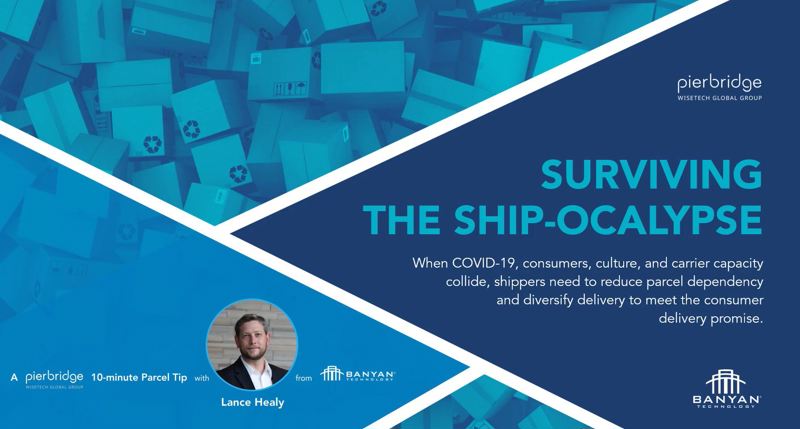Being a shipper today is tough. It is also busy. As COVID-19 gripped the world, more shoppers looked online to make purchases. COVID-19’s accelerated shift to eCommerce has created a prolonged peak shipping season. Carriers’ space is limited, and they have to make more residential deliveries, passing the costs along to shippers in the way of increased surcharges and volume restrictions.
Even with the hope of moving past the pandemic and reopening as vaccines become available, it doesn’t mean that the malls will be bustling anytime soon.
Many of the social and economic behaviors Americans have adopted during the COVID-19 pandemic are likely to outlast the virus. According to a Pitney Bowes study, 73 percent of consumers say they have enjoyed shopping online during the pandemic more than they expected. Additionally, 28 percent of online shoppers spend more time searching for new brands or sites they have never visited before.
In fact, DigitalCommerce360 reported that Salesforce studies showed that global digital sales reached $181 million from Dec. 1 to Dec. 14, 2020, a 45-percent jump from the year before. In the U.S., online sales reached $39 billion over the same timeframe, an increase of 36 percent from 2019.
Customers still have high expectations for deliveries
Simultaneously, these customers are still expecting their deliveries to arrive fast and at low or no cost to them, regardless of external forces.
Even during the recent record-shattering holiday season with as many as 3 billion packages delivered and more parcels than expected arriving close-to or on time still, 41 percent of respondents to a Convey survey said that longer-than-expected shipping times were the most significant problem they experienced during the peak.
To help reduce the cost and time of getting products in consumers' hands, retailers and eCommerce businesses turn an eye locally as they take an omnichannel logistics approach to their shipping operations.
In the end, all shipping is local
By turning storefronts into mini-warehouses and utilizing local distribution centers and warehouses rather than strictly regional ones, retailers and 3PLs working with them can bring the product closer to the customer’s front door.
This means that retail and eCommerce shippers and the 3PLs they work with will have to continue to focus on the business's parcel end and expand their carrier network. Regional and local parcel carriers are becoming a vital addition to national carriers. While this multi-carrier approach can add to profitability, it also requires additional management for all the moving pieces.
Take 10 minutes [this one comes in at under nine] to watch the first episode of our new mini-webinar series Take 10 entitled, “Surviving the Ship-ocalypse.” During the episode, Banyon Technology Co-Founder and Chief Innovation Officer Lance Healy discuss what shippers need to do as COVID-19, consumers, culture, and carrier capacity collide, including incorporating an omnichannel, multi-carrier strategy utilizing regional and local carriers.
